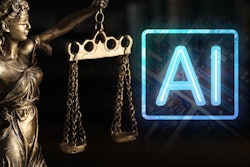A report in the Dutch media about an x-ray AI developer who is being held in police custody over alleged fraud has focused attention on malpractice and scams in the tech sector and how end users can protect themselves.
The 28-year-old man from Haarlem will remain in custody for two weeks on suspicion of large-scale international fraud, according to an article posted on 25 October by the Dutch Broadcasting Foundation (NOS), a public broadcaster.
Police suspect that the man has duped at least 10 people in four countries and has been involved in money laundering and fraud since 2019. NOS says he owns a company with offices in the U.S., Italy, and the Netherlands and focuses on medical professionals and investors interested in AI technology.
The company claims to have developed software for analyzing x-rays using AI. Customers who then transfer money to the firm never receive a working product, and the money is transferred to a foreign bank account, according to Dutch police.
The case was investigated by the Financial Economic Crime team (FINEC) after a victim reported the crime. Investigators discovered that the man was active in the U.S., Italy, the Netherlands, and Switzerland, and his company is registered in Rotterdam, NOS reported.
The suspect was arrested in a hotel room in Rome in September, but he has only now appeared before the examining magistrate. He first had to be extradited from Italy, the article said.
By presenting forged financial documents and fake bank statements, the man collected millions of euros, which were then transferred to offshore accounts, and a working product was never created, according to a second report in the Dutch media.
"Several computers and phones were seized during the arrest, and employees and victims are currently being questioned," the report noted. "The FINEC team is working closely with the Italian Guardia di Finanza to track down additional victims and is investigating options for recovering the lost funds."
How the fraudsters work
It's likely that it's investors who have been duped because in early-stage AI investment, there are not a lot of products to purchase and individuals are buying more into the team and its approach to AI development, an expert source told AuntMinnieEurope.com on 28 October.
"If it has been going on a while, I also expect there are pilot customers/development partners too -- investors will expect to see testing in real-world settings -- and this would make it more complicated," the source said. "Pilots would likely only happen with sign-off from senior radiologists and if in hospitals, committees of expertise. Therefore, the suspect may have had an accomplice or two -- perhaps private radiologists -- to keep the deceit going and investors putting money in."
Investor fraud would be the most likely charge, but if the AI gets as far as being used in clinical settings, then claims of medical negligence might also arise, the expert added.
"AI investment/development is probably quite prone to this sort of thing but quite hard to prove; if you sell a concept for investment at an early stage, then it's known to be risky. My guess is here is the defendant massively oversold capability and perhaps even the existence of the algorithm/software, maybe fabricating results/existence of software tools and progress towards customer deployment," the source stated.
If the suspect did a good enough job of convincing investors to put additional funds in beyond the usual seed round, then it's conceivable that the situation carried on for several years (seed to Series A can easily take between two and four years).
Early-stage development is inherently risky for investors, especially in AI/software development, and it would need a technical expert to review the intellectual property issue if the applicant is promoting a specific algorithm, according to the expert. "When entering the main development and the go-to-market phase, there should be proper scientific peer-reviewed literature to back up the technology and clear regulatory pathway adherence. Investors should have clear development milestones and expectations mapped and legally embedded into investor agreements, thereby raising an immediate red flag if missed."
Protection measures
Before signing deals on AI, end users must check on reference sites, as well as clear regulatory clearance/compliance, and onsite piloting is essential for testing any new technology.
"The regulatory system should limit/flag bad actors before they get to market," the source pointed out. "X-ray is a competitive market segment with lots of established vendors, so it should be fairly easy to avoid serious issues. Lots of companies 'over-market' publicly and under-deliver, so written agreements with customers/investors are essential."
Useful information is available on websites like radiology.healthairegister.com, and it's vital to check what certificates exist.




















